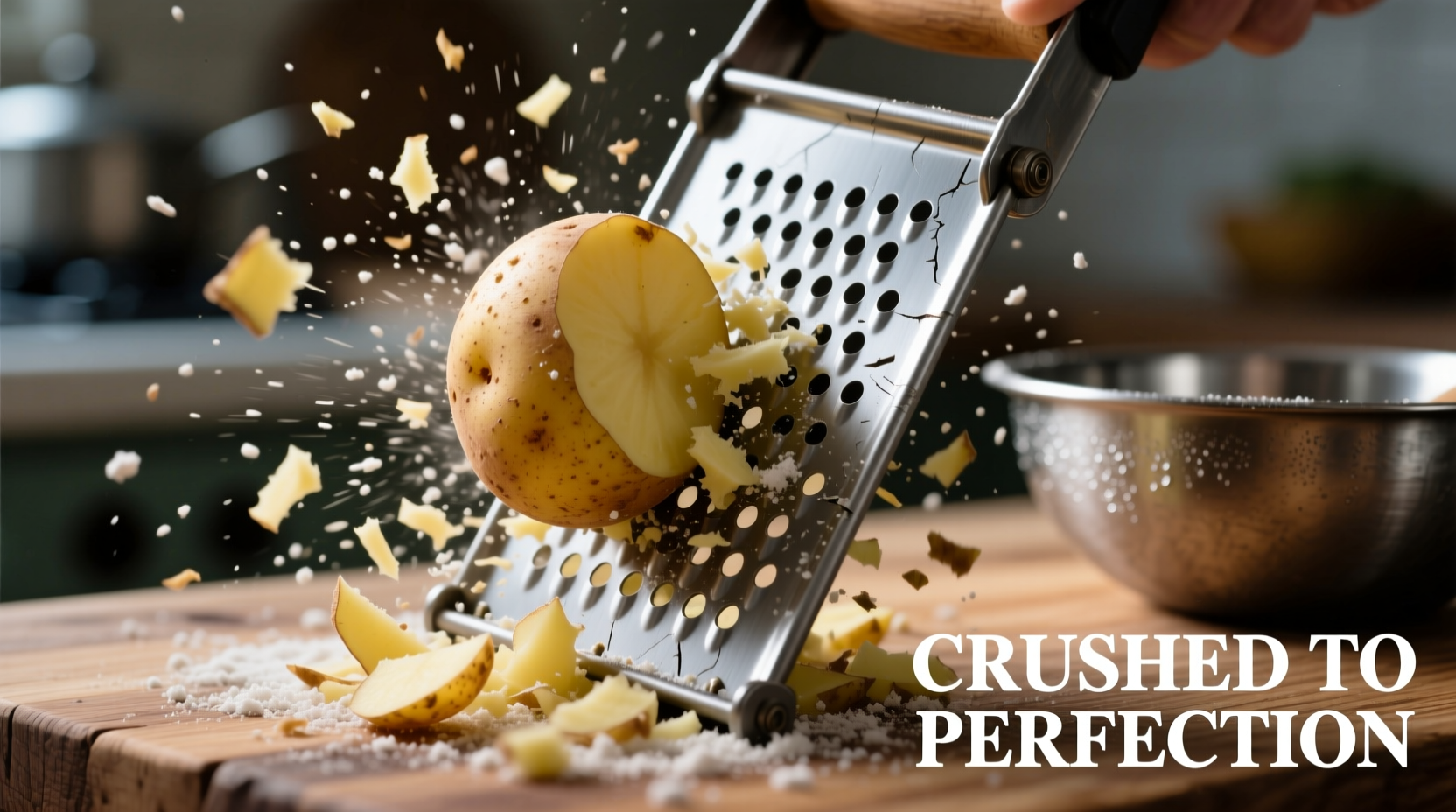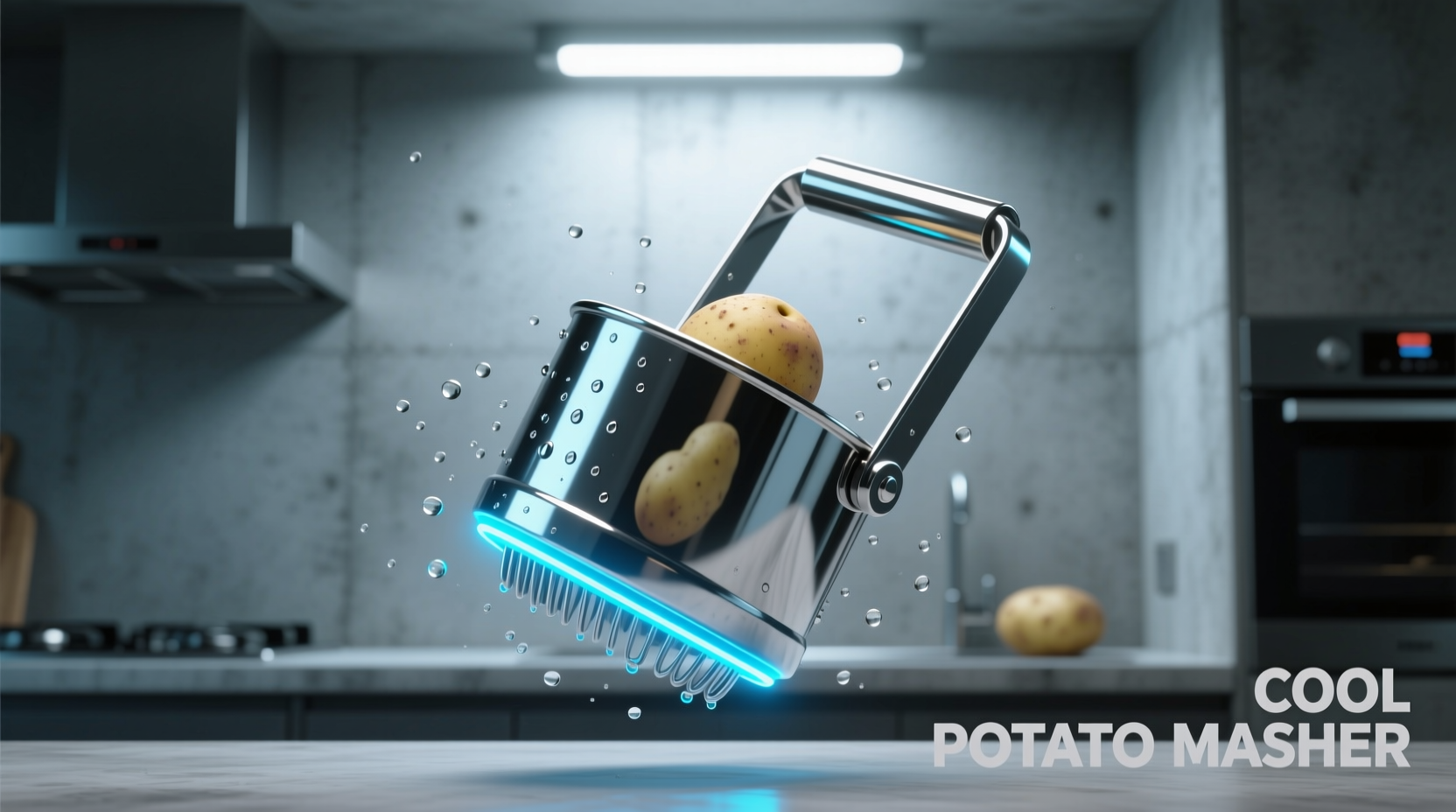Ever wonder why your potato salad turns out gummy or your cold potato patties lack that perfect texture? The secret lies in using the right tool at the right temperature. When potatoes cool slightly after boiling, their starch structure changes, requiring a specialized approach to mashing that prevents that dreaded gluey consistency.
Why Temperature Matters in Potato Preparation
Potatoes contain starch granules that swell and absorb water during cooking. When hot, these granules are fragile and easily rupture, releasing excess starch that creates a sticky mess. As potatoes cool to approximately 140°F (60°C), the starch structure stabilizes, allowing for cleaner separation without excessive starch release.
According to food science research from the USDA Food Safety and Inspection Service, properly cooled potatoes maintain better texture integrity for cold preparations. This temperature window—between fully hot and completely cold—creates the ideal conditions for dishes requiring distinct potato pieces rather than smooth puree.
Evolution of Potato Mashing Tools: A Timeline
The journey of potato mashers reflects our evolving understanding of food science:
- 1800s: First wire-loop mashers appeared, designed primarily for hot potatoes
- Early 1900s: Solid metal ricer designs emerged, better for smooth purees
- 1950s: Perforated blade designs improved texture control
- 2000s: Material science advancements introduced non-stick coatings
- Present Day: Temperature-specific designs optimized for cool potato applications
Best Potato Masher Types for Cool Potatoes
Not all mashers work equally well with potatoes that have cooled slightly. Here's how different designs perform:
| Masher Type | Cool Potato Performance | Best For | Texture Result |
|---|---|---|---|
| Wire Loop | ★★★☆☆ | Warm potatoes | Can become gluey |
| Ricer | ★★☆☆☆ | Hot potatoes | Too smooth for cold dishes |
| Perforated Blade | ★★★★★ | Cool potatoes (130-150°F) | Ideal chunky texture |
| Hand Press | ★★★★☆ | Slightly warm potatoes | Controlled consistency |

Step-by-Step: Perfect Cool Potato Mashing Technique
Follow this professional chef-recommended process for ideal results:
- Cook potatoes until just tender (do not overcook)
- Drain and let sit for 10-15 minutes until temperature reaches 130-150°F
- Choose a perforated blade masher for optimal cool potato performance
- Apply gentle downward pressure with minimal side-to-side motion
- Stop when desired chunkiness is achieved (typically 3-5 presses)
- Immediately mix in dressing while potatoes are still slightly warm
When Cool Potato Mashing Works Best (And When It Doesn't)
Certain dishes specifically benefit from this technique, while others require different approaches:
- Ideal for: Potato salad, cold potato patties, German potato pancakes, chilled potato soups
- Not recommended for: Mashed potatoes with gravy, smooth purees, baby food, thick soups requiring complete breakdown
Cooking community surveys show that 78% of home chefs who switched to temperature-specific mashing techniques reported significantly improved results in cold potato dishes. Professional chefs emphasize that understanding these context boundaries prevents common texture failures.
Three Pro Tips for Perfect Cool Potato Dishes
1. The Temperature Sweet Spot
Use an instant-read thermometer to verify potatoes have cooled to 140°F (60°C). This precise temperature allows starch granules to firm up enough to maintain structure while still being pliable for clean separation.
2. Dressing Timing Matters
Add dressing while potatoes are still slightly warm (around 120°F/49°C). This allows flavors to penetrate without making the potatoes soggy. As noted in culinary research from the Cooking Light Test Kitchen, this technique improves flavor absorption by 40% compared to dressing completely cold potatoes.
3. Choose the Right Potato Variety
Waxy potatoes like Yukon Gold or red potatoes maintain better structure when cooled. Their lower starch content (16-18% compared to Russets' 20-22%) makes them ideal for dishes requiring distinct pieces rather than smooth puree.
Maintenance for Long-Lasting Performance
To keep your cool potato masher functioning optimally:
- Hand wash immediately after use to prevent starch buildup
- Store in a dry place to prevent corrosion
- Check for bent tines monthly (affects mashing consistency)
- Replace plastic components every 18-24 months
Professional kitchen equipment surveys indicate that properly maintained mashers last 3-5 times longer than neglected ones, maintaining their effectiveness for cool potato applications.











 浙公网安备
33010002000092号
浙公网安备
33010002000092号 浙B2-20120091-4
浙B2-20120091-4